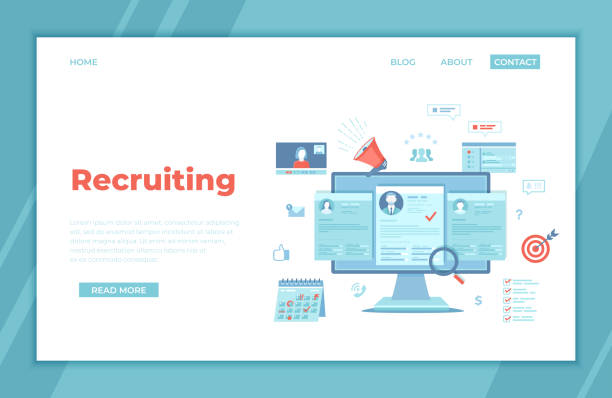Introduction and the Importance of a Multilingual Website in Today’s World

In the era of globalization, having a website is no longer enough for just an online presence.
To reach markets beyond geographical and cultural borders, #Multilingual_Website_Design has become a necessity.
This approach not only allows you to connect with a wider audience but also demonstrates your business’s credibility and professionalism.
Imagine a potential customer from Germany or Japan visiting your website and being able to read your content in their native language; this unparalleled user experience creates a sense of trust and comfort in them.
An international website is a gateway to new opportunities.
This is not limited to large corporations; even small and medium-sized businesses can gain a significant share of global markets by adopting a smart strategy for multilingual site design.
Statistically, a large percentage of internet users do not have English as their native language and prefer to consume content in their local language.
This is a golden opportunity that should not be overlooked.
In this article, we will analytically and instructively examine various aspects of creating a multilingual site so that you can make the best decision for your digital future.
The ultimate goal is how you can ensure sustainable growth and profitability for your business by increasing accessibility.
This is a strategic move to expand your sphere of influence.
Are you dissatisfied with the low sales of your e-commerce website?
RasaWeb is your solution for having a professional and high-selling e-commerce site.
✅ Significant increase in sales and revenue
✅ Easy and enjoyable shopping experience for customers
⚡ Get a free consultation from RasaWeb right now!
Countless Advantages of Having a Multilingual Website
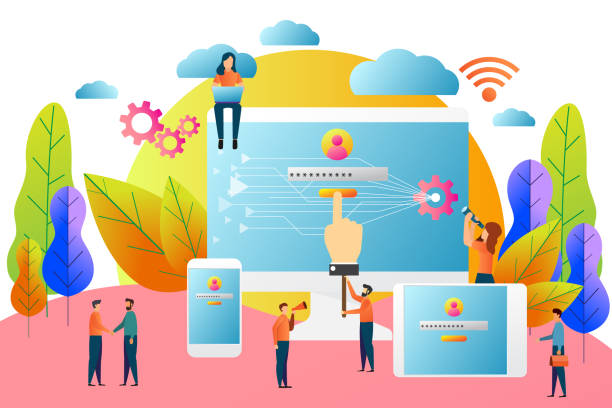
Multilingual website design is not just a technical feature; it’s a powerful strategy for market expansion and revenue growth.
The first and most important advantage is access to a broader audience.
When your website is available in multiple languages, you can attract users from different countries who would otherwise never access your content.
This directly leads to an increase in website traffic and, consequently, an increase in potential customers.
The second advantage is improved international SEO.
Search engines like Google rank multilingual websites higher because they provide content relevant to local searches.
This means appearing in search results related to different languages, which itself helps increase brand visibility and credibility.
A site optimized for multiple languages significantly increases your chances of competing in global markets.
Furthermore, a multilingual site greatly contributes to building trust and enhancing brand credibility.
Providing content in the user’s native language shows your respect for their culture and needs.
This sense of closeness strengthens customer loyalty and increases the likelihood of converting visitors into customers.
From a competitive perspective, businesses that are pioneers in multilingual website design gain a significant advantage over their monolingual competitors.
This approach is, in fact, a smart investment for long-term growth and sustainability in the global market.
This is a type of precise analysis of the international market situation.
Challenges and Solutions for Implementing a Multilingual Site
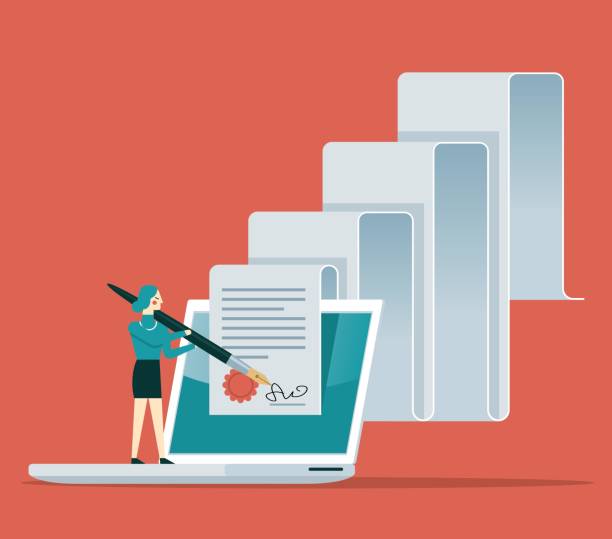
Implementing a multilingual site design, while offering many benefits, also comes with challenges that require careful planning and smart solutions.
One of the main challenges is managing translated content and ensuring its quality.
Simply translating words is not enough; content must be localized to align with the culture and linguistic sensitivities of the target audience.
Using native and specialized translators in your field is a key solution to maintain quality and prevent cultural misunderstandings.
Another challenge involves technical issues related to URL structure, hreflang tags, and Content Management Systems (CMS).
Choosing an appropriate CMS that supports multilingual capabilities, such as WordPress with suitable plugins or Drupal, is of high importance.
Also, the URL structure must be designed to be optimized for both users and search engines (e.g., subdirectory, subdomain, or separate domain).
These are technical topics that require great precision.
Finally, continuous maintenance and updating of a multilingual website also pose a challenge.
Any change in the original content must be applied to all languages to maintain consistency.
This process can be time-consuming and costly if not managed properly.
Using automation systems and Translation Management Systems (TMS) can facilitate this process.
This approach is a comprehensive guide to addressing problems.
| Challenge | Description | Solution |
|---|---|---|
| Translation Quality | Machine or non-native translations lead to cultural misunderstandings. | Use native and specialized translators in the relevant field. |
| International SEO | Incorrect identification of languages by search engines. | Correct implementation of hreflang tags and appropriate URL structure (subdirectory, subdomain). |
| Content Management | Updating and coordinating content across different languages is difficult. | Choose a suitable CMS with multilingual capabilities and use TMS. |
| User Experience | Inappropriate user interface for different languages and cultures. | Localize design, images, and date/currency formats. |
Choosing the Best Technical Strategies for a Multilingual Website
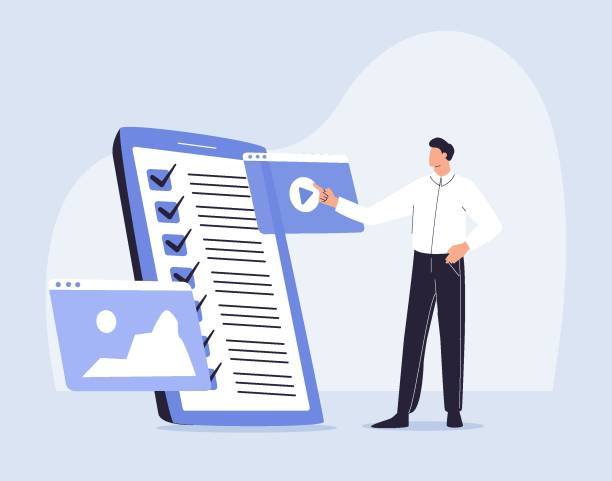
When undertaking multilingual site design, choosing the appropriate technical strategy is of paramount importance.
There are three main approaches to managing different language versions of a website: using subdirectories, subdomains, or separate Top-Level Domains (TLDs) for each language.
Each of these methods has its own advantages and disadvantages from an SEO and management perspective.
Subdirectories (e.g., yoursite.com/fr/) are often considered the best option for SEO, as all language content resides under one main domain and benefits from the parent domain’s authority.
Their management is also usually simpler.
Subdomains (e.g., fr.yoursite.com) are also a popular option, but search engines may treat them as relatively independent entities, which can affect the distribution of SEO rank (PageRank).
Separate Top-Level Domains (e.g., yoursite.fr) for each country/language provide the greatest separation and allow you to host closer to your audience, which can help with site loading speed.
However, managing multiple domains and building links for each can be complex and costly.
Choosing the right CMS is also vital.
Systems like Drupal, WordPress with plugins like WPML or Polylang, or even custom platforms, each offer different capabilities for managing translations, URLs, and hreflang tags.
It is recommended to evaluate your long-term needs and budget and consult with an international SEO expert before starting a multilingual site design project.
This is a specialized and guiding section that will help you.
Does your current corporate website present a worthy image of your brand and attract new customers?
If not, turn this challenge into an opportunity with RasaWeb’s professional corporate website design services.
✅ Significantly improves your brand’s credibility and image.
✅ Paves the way for attracting new leads and customers.
⚡ Contact RasaWeb now for a free and specialized consultation!
Multilingual Site SEO: Key Principles and Tips
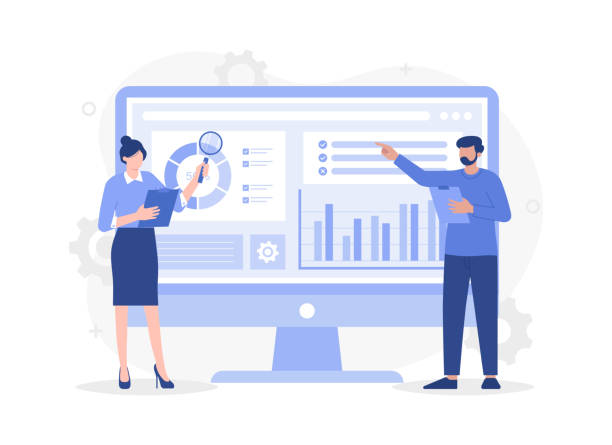
To succeed in global markets, simply having a multilingual site design is not enough; it must also be optimized for search engines.
International SEO is a complex set of principles and tips that help search engines show the correct language version of your website to users in different countries.
The most important element in this regard is the correct use of hreflang tags.
These tags tell Google and other search engines which version of the page is appropriate for which language and geographical region.
Incorrect use of them can lead to duplicate content issues and lower rankings.
Also, keyword research for each language and geographical region is crucial.
Keywords that are popular in one specific language or culture may not have the same meaning or popularity in another language or culture.
Using keyword research tools like Google Keyword Planner or Ahrefs can be helpful in this regard.
Translated content should be enriched with localized keywords to achieve good rankings in local searches.
Other important factors include appropriate URL structure (as previously mentioned, subdirectories are often preferred), site loading speed (especially for international users who might have slower internet), and building inbound links from local and reputable websites.
Additionally, you should ensure that your website server is located close to your main audience, or use a Content Delivery Network (CDN).
Adhering to these educational and specialized principles guarantees the visibility of your multilingual website in search results.
This is a deep educational section for optimization.
Efficient Content and Translation Management

One of the biggest challenges in multilingual site design is the effective management of content and its translation process.
This goes beyond merely translating words; it involves localizing content for different cultures and audiences.
Content must not only be linguistically correct but also culturally appropriate and pleasing.
This includes the use of local idioms, suitable images, and even date and currency formats.
For efficient translation management, using Translation Management Systems (TMS) can be very beneficial.
These tools help you organize, track, and automate the translation process.
TMS can assist translators in maintaining terminology consistency and preventing the repetition of previous translations, which leads to reduced cost and time for translation.
Also, integrating TMS with your website’s CMS greatly simplifies the content update process across all languages.
Another important aspect is creating a glossary and style guide for translators.
These documents ensure that your key terminology and brand tone are consistent and uniform across all languages.
Choosing professional and native translators who are familiar with your industry is of high importance.
Machine translation, while fast and inexpensive, is usually not sufficient for important website content and requires human review.
A comprehensive explanation of how to efficiently manage content, to the sustainability of your site helps.
Useful Tools and Platforms for Multilingual Sites

Choosing the right tools and platforms plays a key role in the success of a multilingual site design project.
Today, there are numerous options available to assist with this process, from Content Management Systems (CMS) to plugins and translation platforms.
In the CMS section, WordPress is the choice for many businesses due to its popularity and high flexibility.
Plugins like WPML (WordPress Multilingual Plugin) and Polylang add powerful multilingual capabilities to WordPress.
These plugins enable translation management, switching between languages in the admin area, and setting hreflang tags.
Drupal is another powerful CMS that was designed from the ground up for multilingual sites and offers comprehensive built-in tools for managing languages and translations.
For larger and more complex projects, Drupal can be a very suitable option.
In addition to CMSs, Translation Management Platforms (TMS) like Smartling, Phrase, or Lokalise also offer advanced tools for automating and optimizing the translation process.
These platforms help you manage glossaries, build Translation Memories, and prevent the repetition of previous translations, which leads to reduced costs and increased translation speed.
These tools and platforms help you launch and manage an efficient and SEO-friendly multilingual site even without deep coding knowledge.
Making the right choice based on your needs and budget is an important step in this direction and serves as a practical guide.
| Category | Tool/Platform Name | Description |
|---|---|---|
| Content Management Systems (CMS) | WordPress | The most widely used CMS, with powerful multilingual plugins (WPML, Polylang). |
| Drupal | Powerful CMS with built-in multilingual capabilities, suitable for large projects. | |
| WordPress Translation Plugins | WPML (WordPress Multilingual Plugin) | Paid plugin with extensive features for translation and language management. |
| Polylang | Free plugin with good capabilities for multilingual WordPress sites. | |
| Translation Management Platforms (TMS) | Smartling | Advanced TMS for managing translation workflows and collaborating with translators. |
| Phrase (formerly PhraseApp) | A comprehensive tool for software and website localization. |
User Experience and Cultural Localization

Successful multilingual site design is not limited to text translation; special attention must be paid to User Experience (UX) and cultural localization.
Localization is a process where website content and design are adjusted according to the culture, habits, and expectations of the local audience.
This includes aspects beyond language and can have a profound impact on user interaction with your site.
For instance, the website layout should change according to the reading direction of the language (e.g., right-to-left for Persian and Arabic).
Colors, images, and symbols must also be chosen carefully; a color or image that has a positive meaning in one culture might be unpleasant or even offensive in another.
For example, the color red symbolizes good luck in some cultures, while in others, it might mean warning or danger.
Furthermore, date and time formats, currency units, measurement systems (such as metric or imperial), and even address and phone number formats must be localized.
Providing local payment options can also help increase conversion rates.
The ultimate goal is for the user to feel that the website is specifically designed for them and their culture, rather than being just a mechanical translation.
This entertaining yet guiding approach creates a deeper connection with the audience and helps you increase not only sales but also customer loyalty.
A localized user experience is the key to success in the global market.
Do you know that customers’ first impression of your company is your website? With a powerful corporate website from RasaWeb, multiply your business’s credibility!
✅ Exclusive and eye-catching design tailored to your brand
✅ Improved user experience and increased customer attraction
⚡ Get a free consultation!
Security and Maintenance Tips for Multilingual Sites
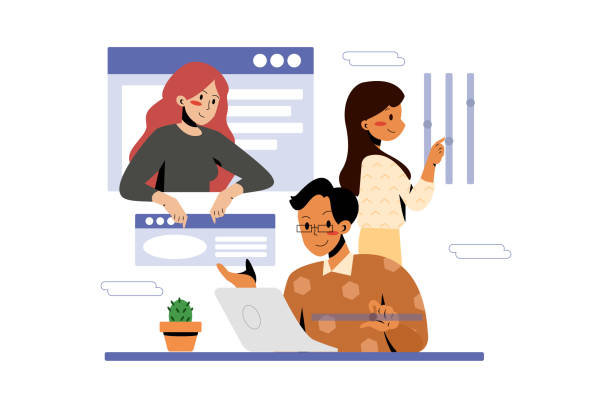
Multilingual site design means managing greater complexities in terms of security and maintenance.
The larger and more complex your website, the more potential vulnerabilities there are for cyberattacks.
Therefore, adhering to security principles and regular maintenance is of paramount importance.
The first step is regularly updating CMS, plugins, and website themes.
Many cyberattacks occur through known vulnerabilities in outdated software.
Ensuring that all language versions of the website adhere to the latest security protocols is crucial.
Using an SSL certificate for all language versions ensures encrypted communications and builds user trust.
Regular and comprehensive backups of all website databases and files (including different language versions) are also very important.
In case of any security or technical issue, backups allow you to quickly restore the website.
Additionally, monitoring website traffic and suspicious activities can help identify threats early.
Maintenance also includes optimizing website performance across all languages.
This involves database cleanup, image optimization, and using a CDN for speeding up content loading for international users.
A healthy and secure multilingual site requires continuous attention and a specialized approach to achieve its business objectives.
Future and Trends of Multilingual Website Design

The digital world is rapidly evolving, and multilingual site design is no exception.
A look into the future shows that new technologies and emerging trends will increasingly influence how international websites are created and managed.
One of the most important trends is Artificial Intelligence (AI) and Machine Learning (ML) in translation and localization.
Neural Machine Translation (NMT) tools are constantly improving and can provide much more accurate and fluent translations.
It is expected that in the future, AI will play a more prominent role in content localization, from detecting tone and culture to suggesting appropriate visual content for each region.
This can make the multilingual website design process both faster and more cost-effective, while also improving quality.
Another trend is greater adaptability to voice and image search.
With the increasing use of voice assistants and image recognition technologies, multilingual websites must be optimized to be accessible for these types of searches as well.
This means more attention to localized audio and visual content.
Also, it is expected that content personalization based on language, geographical location, and even user behavior, will become a standard.
This means that websites will not only provide content in the appropriate language but also tailor it to the specific interests and needs of each user.
This informative and thought-provoking look into the future shows that dynamism and innovation will be key elements in maintaining competitiveness in the global market.
Frequently Asked Questions
| Question | Answer |
|---|---|
| What is a multilingual site? | A site whose content is available to users in more than one language. |
| Why should I make my site multilingual? | To reach a wider audience in global markets, improve user experience, and enhance international SEO. |
| What are the technical approaches to building a multilingual site? | Using subdirectories, subdomains, or URL parameters to differentiate languages. |
| How does multilingual design affect SEO? | By targeting local keywords and providing content in users’ native languages, the site’s ranking in search engines for those regions improves. |
| What are the challenges of multilingual site design? | Managing content translation, supporting Right-to-Left (RTL) direction, technical issues related to language addressing, and maintaining design consistency. |
| How to choose languages for a multilingual site? | Based on target audience analysis, target markets, and current site traffic data (if available). |
| What is RTL support and why is it important for some languages? | Right-to-Left, it is the direction of displaying text and page elements from right to left, which is essential for languages like Persian, Arabic, and Hebrew. |
| How to manage multilingual site content? | Using Content Management Systems (CMS) with multilingual capabilities, translation plugins, or professional translation services. |
| How is User Experience (UX) in a multilingual site? | It should be easy to change the language, and the translated content must be of high quality so users feel comfortable. |
| What are the common CMS platforms for multilingual sites? | WordPress (with plugins like WPML), Joomla, Drupal, and Shopify (with relevant settings or plugins). |
And other services of RasaWeb Advertising Agency in the field of advertising
Smart Link Building: Revolutionize digital branding with Google Ads management.
Smart Marketing Automation: An effective tool to improve SEO ranking by precisely targeting audiences.
Smart Link Building: A professional solution to increase sales by focusing on custom programming.
Smart Custom Software: A combination of creativity and technology for analyzing customer behavior through optimizing key pages.
Smart Advertorials: Revolutionize sales growth with intelligent data analysis.
And over a hundred other services in the field of internet advertising, advertising consulting, and organizational solutions
Internet Advertising | Advertising Strategy | Advertorials
🌐 To elevate your business in the digital world and achieve unprecedented success, RasaWeb Afarin Digital Marketing Agency is by your side with its expertise and experience. From user-friendly website design and SEO optimization to executing targeted advertising campaigns, we are ready to transform your brand in the online space and pave the way for sustainable growth for you.
For consultation and services, contact us.
📍 Tehran, Mirdamad Street, next to Bank Markazi, Kazeroun Jonoubi Alley, Ramin Alley No. 6
Resources
Multilingual Site Design Guide
International SEO Tips for Websites
How to Globalize Your Business with a Multilingual Site?
Introduction to Multilingual Content Management Systems

